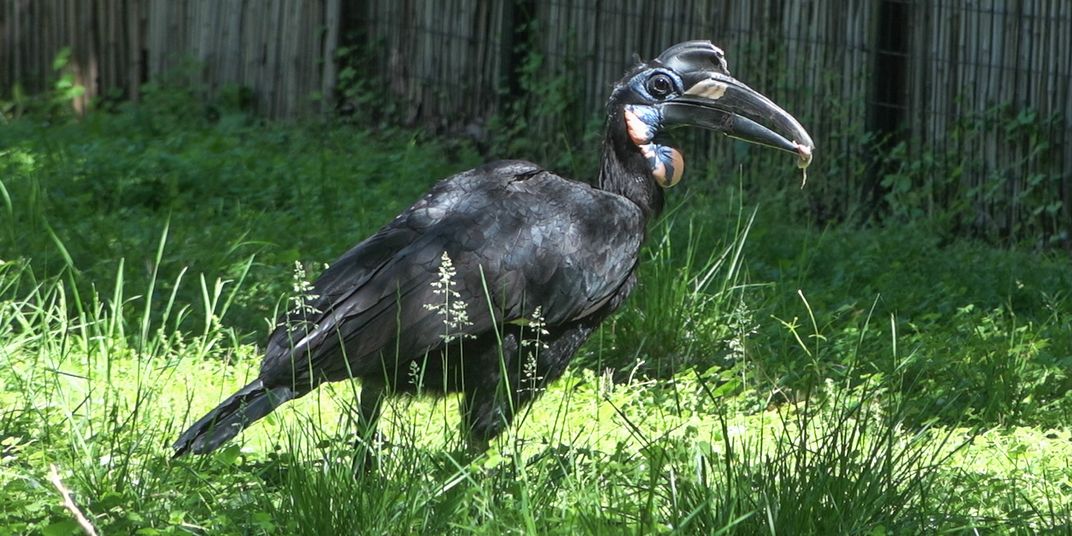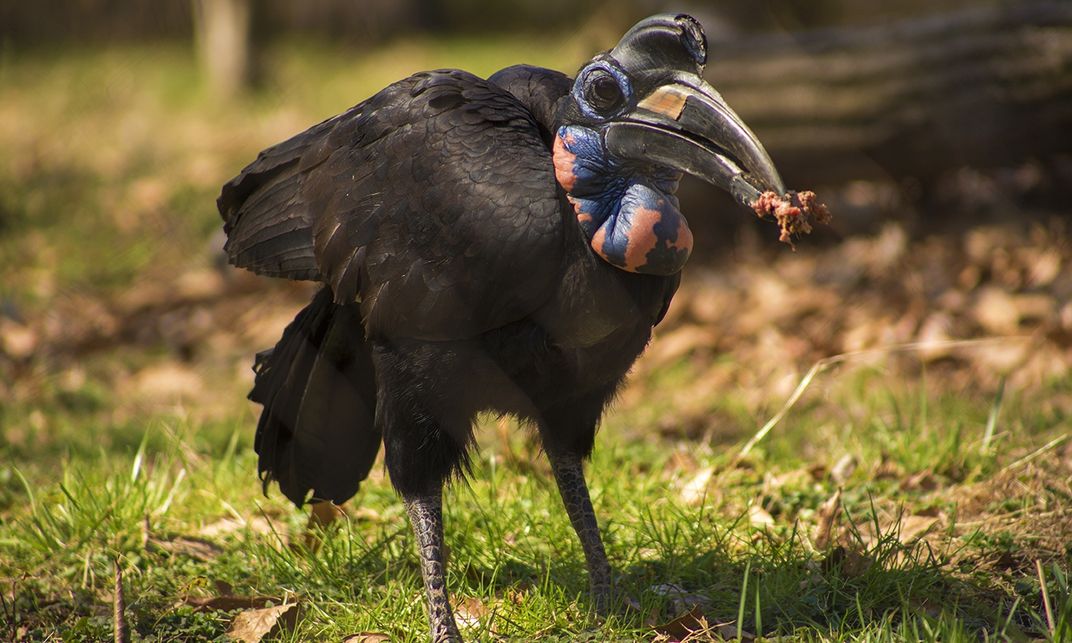NATIONAL ZOO AND CONSERVATION BIOLOGY INSTITUTE
When Karl Met Karoline
Meet Karl. He’s an Abyssinian ground hornbill, a bird native to the grasslands of north-central Africa and listed as vulnerable by the International Union for Conservation of Nature.
/https://tf-cmsv2-smithsonianmag-media.s3.amazonaws.com/blogging/featured/karl-and-karoline-001-20190612146cpm.jpg)
Meet Karl. He’s an Abyssinian ground hornbill, a bird native to the grasslands of north-central Africa and listed as vulnerable by the International Union for Conservation of Nature.
This summer, Karl got a new roommate — a hornbill named Karoline! The pair met in June, but their story really began two years ago when keepers decided to build Karl a new beak.
Karl’s most striking feature, along with his long eyelashes and brightly colored throat sack, is his beak. It’s also one of his most important tools. Hornbills rely on their beaks to communicate, hunt, find a mate and care for their chicks.
Although Abyssinian ground hornbills can fly, they spend most of their time on the ground. They use their beaks like daggers, hammering and digging for food, so it’s not unusual for them to break. Hornbills are adaptable and can generally figure out how to survive with a damaged beak, but it can make everyday tasks difficult.
Karl's lower beak was weak when he arrived at the Zoo in 2012. As it began to deteriorate over the years, animal keepers wondered what they could do to help.
By turning his head sideways and scooping his beak across the ground, Karl could pick up his favorite foods, meatballs and mice, but smaller prey was out of reach. He couldn’t quickly snatch up snakes and frogs, or hunt around his yard for earthworms and insects.

Karl’s broken beak would have also made it difficult to land a date. A male hornbill attracts a female by bringing her tasty treats, carrying nesting materials like leaves and twigs, and using his tweezer-like beak to preen her feathers. Courting hornbills affectionately slap their beaks together making a loud, clacking sound. When it comes time to lay eggs, males build a nest in a hollow tree and help to raise the chicks.
Keepers wanted to give Karl every opportunity to live like a typical hornbill. So in 2017 — with the help of veterinarians, an exhibit specialist, a hornbill skeleton and a 3-D printer — they set out to make him a new beak.
Karl’s artificial beak has given him more than just a book deal. Now he can once again hunt for crickets and mealworms. “He just gobbles them right up,” says animal keeper Deb Grupenhoff. When keepers give him enrichment — like bugs hidden inside paper bags — he can pick it up, shake it and root around for snacks.

With his confidence restored, he even has the chance to bond with another bird — something that may not have been possible with his old beak.
With the help of the Abyssinian ground hornbill Species Survival Plan (which matches animals based on their genetics, health and personality, among other traits), keepers finally found Karl a new roommate. In June, they introduced him to Karoline, a 1-year-old hornbill who came to the Zoo from Florida.
So how are the two getting along? Keepers say Karl is more down to business than Karoline, who appears curious and playful, but it didn’t take long for the two birds to become friends. “Abyssinian ground hornbills are such social critters,” says Grupenhoff.
Hornbills are monogamous and form lifelong bonds, but for now Karl and Karoline are just companions. Karl is nearly 30 years old, and Karoline won’t reach sexual maturity for a few more years.
Karl regularly brings Karoline mice and other things to eat. With his prosthetic beak, he could even groom her feathers. “It’s a great learning experience for her,” says assistant curator Gil Myers. Karoline is still young, and Karl has a lifetime of knowledge to share.
Karl and Karoline share a habitat with a multi-generational herd of lesser kudus at Cheetah Conservation Station. Stop by to see them during your next visit to the Zoo.




